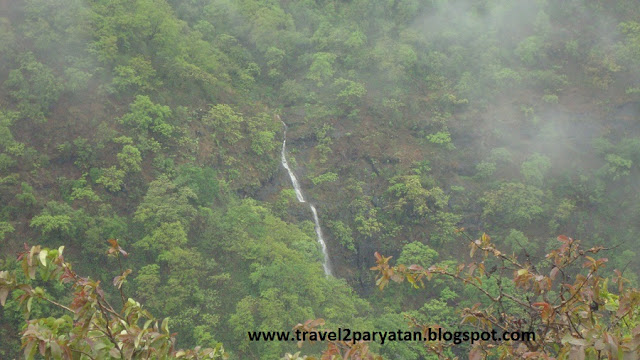Ellora Caves ( वेरूळ लेणी )
Ellora is an archaeological site 29 km (18 mi) north-west of the city of Aurangabad in the Indian state of Maharashtra, built by the Rashtrakuta dynasty (Brahmanical & Buddhist group of caves) and Yadav (Jain group of caves). Well known for its monumental caves, Ellora is an UNESCO World Heritage Site and forms one of major tourist attraction in Marathwada region of Maharashtra, Ellora represents the epitome of Indian rock-cut architecture. The 34 "caves" are actually structures excavated out of the vertical face of the Charanandri hills. Hindu, Buddhist and Jain rock-cut temples and viharas and mathas were built between the 5th century and 10th century. The 17 Hindu (caves 13–29), 12 Buddhist (caves 1–12) and 5 Jain (caves 30–34) caves, built in proximity, demonstrate the religious harmony prevalent during this period of Indian history.[3] It is a protected monument under the Archaeological Survey of India.Ellora, also called Verul or Elura,
वेरूळ एक पुरातत्व साइट 29 किमी (18 मैल) हा भारताच्या महाराष्ट्र राज्यातील औरंगाबाद शहर उत्तर-पश्चिम, राष्ट्रकूट राजवंश (लेणी Brahmanical आणि बौद्ध गट) आणि यादव (लेणी जैन गट) बांधले आहे. तसेच त्याच्या अत्यंत महत्वाचा लेणी प्रसिध्द, वेरुळ एक युनेस्को जागतिक वारसा स्थान आहे आणि महाराष्ट्राच्या मराठवाडा विभागातील प्रमुख पर्यटन एक अर्ज, वेरुळ भारतीय रॉक-कट आर्किटेक्चर योजना प्रतिनिधित्व करतो. 34 "लेणी" प्रत्यक्षात Charanandri टेकड्या उभ्या चेहरा उत्खनन संरचना आहेत. हिंदू, बौद्ध व जैन रॉक-कट मंदिरे आणि उद्देश व फायदे याबद्दल 5 व्या शतकात व 10 वे शतक या काळात बांधले होते. 17 हिंदू (लेणी 13-29), 12 बौद्ध (लेणी 1-12) आणि 5 जैन (लेणी 30-34) लेणी, शेजारी बांधली भारतीय इतिहास या काळात प्रचलित धार्मिक सुसंवाद दिसून येते. [3] हे India.Ellora पुरातत्त्व विभागाने, तसेच Verul किंवा Elura म्हणतात अंतर्गत संरक्षित स्मारक आहे,
Ellora is an archaeological site 29 km (18 mi) north-west of the city of Aurangabad in the Indian state of Maharashtra, built by the Rashtrakuta dynasty (Brahmanical & Buddhist group of caves) and Yadav (Jain group of caves). Well known for its monumental caves, Ellora is an UNESCO World Heritage Site and forms one of major tourist attraction in Marathwada region of Maharashtra, Ellora represents the epitome of Indian rock-cut architecture. The 34 "caves" are actually structures excavated out of the vertical face of the Charanandri hills. Hindu, Buddhist and Jain rock-cut temples and viharas and mathas were built between the 5th century and 10th century. The 17 Hindu (caves 13–29), 12 Buddhist (caves 1–12) and 5 Jain (caves 30–34) caves, built in proximity, demonstrate the religious harmony prevalent during this period of Indian history.[3] It is a protected monument under the Archaeological Survey of India.Ellora, also called Verul or Elura,
वेरूळ एक पुरातत्व साइट 29 किमी (18 मैल) हा भारताच्या महाराष्ट्र राज्यातील औरंगाबाद शहर उत्तर-पश्चिम, राष्ट्रकूट राजवंश (लेणी Brahmanical आणि बौद्ध गट) आणि यादव (लेणी जैन गट) बांधले आहे. तसेच त्याच्या अत्यंत महत्वाचा लेणी प्रसिध्द, वेरुळ एक युनेस्को जागतिक वारसा स्थान आहे आणि महाराष्ट्राच्या मराठवाडा विभागातील प्रमुख पर्यटन एक अर्ज, वेरुळ भारतीय रॉक-कट आर्किटेक्चर योजना प्रतिनिधित्व करतो. 34 "लेणी" प्रत्यक्षात Charanandri टेकड्या उभ्या चेहरा उत्खनन संरचना आहेत. हिंदू, बौद्ध व जैन रॉक-कट मंदिरे आणि उद्देश व फायदे याबद्दल 5 व्या शतकात व 10 वे शतक या काळात बांधले होते. 17 हिंदू (लेणी 13-29), 12 बौद्ध (लेणी 1-12) आणि 5 जैन (लेणी 30-34) लेणी, शेजारी बांधली भारतीय इतिहास या काळात प्रचलित धार्मिक सुसंवाद दिसून येते. [3] हे India.Ellora पुरातत्त्व विभागाने, तसेच Verul किंवा Elura म्हणतात अंतर्गत संरक्षित स्मारक आहे,
The Kailasanatha temple कैलास मंदिर
Cave 16, also known as the Kailasa temple, is considered one of the most remarkable cave temples in India because of its size, architecture and sculptural treatment. It is dedicated to Shiva, and also contains smaller, detached shrines dedicated to Ganga, Yamuna and Saraswati. The structure looks like a freestanding, multi-storeyed temple complex, but it was carved out of one single rock, and covers an area double the size of Parthenon in Athens.
The construction of the temple is often attributed to the Rashtrakuta king Krishna , based on certain epigraphs. The temple shows traces of Pallava style. The dimensions of the courtyard are 82 m x 46 m at the base. The entrance features a low gopuram. The central shrine housing the lingam features a flat-roofed mandapa supported by 16 pillars, and a Dravidian shikhara. An image of Shiva's mount Nandi (the sacred bull) stands on a porch in front of the temple. The temple complex features several sculptures, including that of Ravana attempting to lift Mount Kailasa.
गुहेत 16, देखील कैलास मंदिर म्हणून ओळखले, कारण त्याचे आकार, वास्तुकला आणि शिल्पासारखे उपचार भारतात सर्वात उल्लेखनीय गुहा मंदिर एक मानली जाते. हे महादेवाला समर्पित आहे, तसेच गंगा, यमुना आणि सरस्वती या समर्पित लहान, अलिप्त उंचावरील आहे. रचना कसलाही आधार न घेता उभा असलेला, दुमजली मंदीराच्या दिसते, पण ते एकाच खडक निर्माण करण्यात आला, आणि एक क्षेत्र अथेन्स अथीनाचे अथेन्स येथील मंदिर आकार दुप्पट समाविष्टीत आहे.
मंदिराचे बांधकाम अनेकदा काही epigraphs आधारित, राष्ट्रकुट राजा कृष्ण गुणविशेष आहे. मंदिर पल्लव शैली मागोवा दाखवते. अंगणाच्या परिमाणे बेस येथे 82 मीटर x 46 मीटर आहे. प्रवेशद्वार कमी gopuram समाविष्टीत आहे. lingam गृहनिर्माण केंद्रीय यात्रेसाठी 16 खांब समर्थीत फ्लॅट roofed mandapa, आणि एक द्रविड shikhara समाविष्टीत आहे. शिव माउंट नंदी (पवित्र सांड) प्रतिमा मंदिराच्या समोर एक उंबरठ्यावर उभा आहे. मंदीराच्या रावण माउंट कैलास लिफ्ट प्रयत्न की अनेक शिल्पे, समाविष्टीत आहे.
From - www.travel2paryatan.blogspot.com .
































